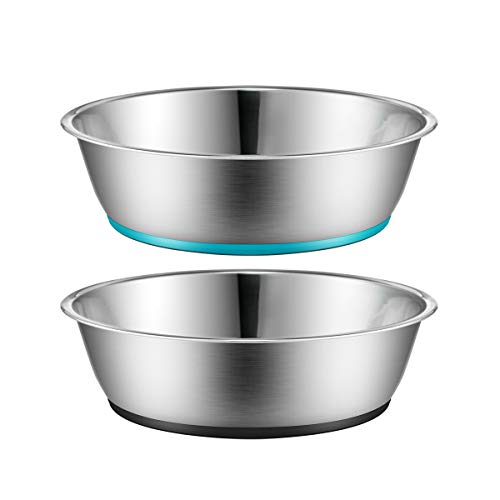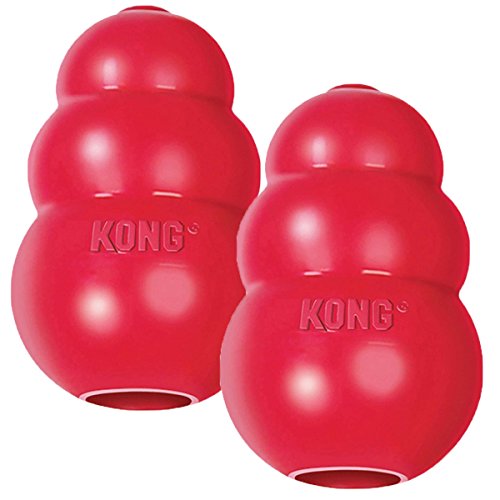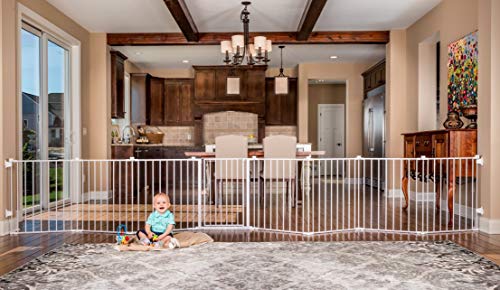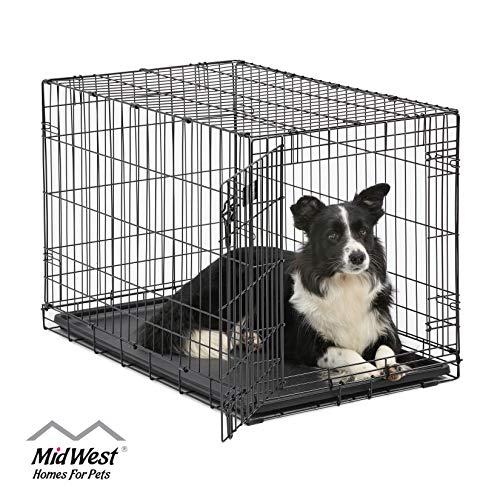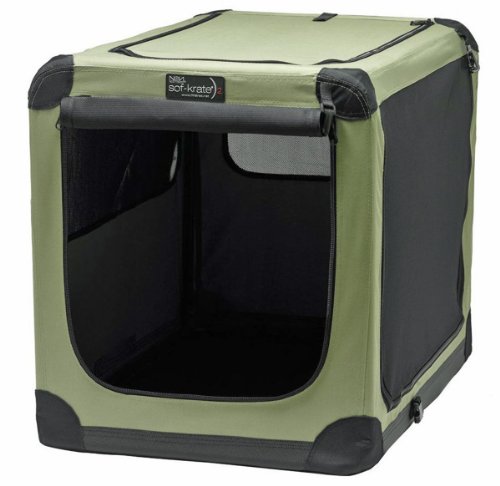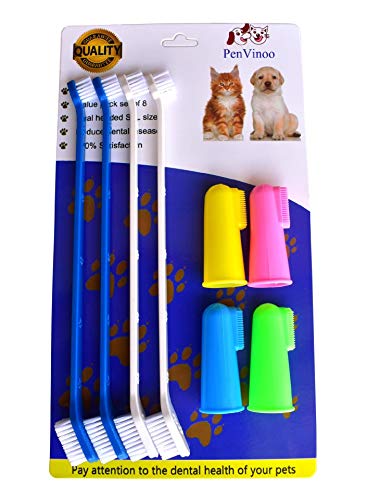Congratulations on your new family member! Puppies can bring us so much joy and love, but bringing a new puppy home can also be a little nerve wracking. Is the house “puppy proof”, do you have all the supplies you need? What treats to use? What if they get an upset tummy from all the changes? What about training?
Here’s a helpful list of supplies to think about getting with new puppies to make sure your new puppy is on the right track for holistic care to maximize their health and well-being. For more detailed information on my general recommendations including medical stuff like what to do about vaccines, deworming, how much to feed, and what kind of issues to watch out for see my downloadable Puppy FAQs guide.
This post contains affiliate links which I may earn commissions from. As an Amazon associate I earn from qualifying purchases.
Food and Water Bowls
Ceramic or metal food and water dishes are best. Get a size that will make sense for how big your puppy will end up being. If it’s a little dog they only need a small water dish, if they’re going to be a big dog you might as well get a big water dish now.
For food dishes slow feeders or “puzzle feeders” are good options to help keep puppies entertained.
Especially if your puppy is going to be over 50 lbs consider getting an elevated feeder since that’s more comfortable for them and better for their joints then having to bend really far down for food and water.
Don’t forget some collapsible bowls for car trips, visiting friends and family, camping, and hikes.
Leashes, collars, harnesses, head collars
As we know puppies often like to chew on the leash which makes leash training more difficult and frustrating. Using a leash made of rubber, biothane, or (faux) leather can reduce that.
Collars should be fit so they can’t be pulled off over the ears but can be moved up, down and around the neck easily. Since puppies grow so quickly you’ll probably have to loosen the collar weekly which means you’ll want an adjustable one and you still may have to go up a size before they’re fully grown. Flat collars are the safest for wearing all the time.
Harnesses and head collars are a source of much debate. The truth is that the best thing for your pet is to learn to walk on a leash without pulling or taking off after something. If they do that it doesn’t matter what they wear. But your puppy probably didn’t come leash trained so in the meantime there’s going to be a lot of pulling and running after something and suddenly hitting the end of the leash. When that happens and they’re wearing a neck collar or head collar it is more likely to basically cause whiplash vs a harness spreading out those forces. Note that when we want dogs to pull sleds we put them in a harness with a back attachment. So if you want to help reduce pulling you’ll want a front attaching harness. Very small puppies may need a cat harness for correct fit. Harnesses should be fit snugly and not obstruct the movement of the front legs at all. As with collars you’ll probably go through a couple harnesses as you puppy grows. Avoid retractable leashes. PS: If you want to know more details on the ins and outs of the harness debate check out my Puppy FAQ guide!
Toys
There’s going to be a lot of playing and chewing so you’ll need a variety of toys. Different dogs like different types of toys so try out some different kinds. Everybody needs a good durable chewing toy though. Kong or similar are great since they can be used for distraction and help with teaching puppies how to be alone.
Any toys with parts that could be chewed off and swallowed like rope or plush toys are fine with supervision but not safe unsupervised. For dogs under about 10 lbs cat toys can be a fun option too. All toys should be big enough your puppy can’t swallow them. So your puppy may outgrow some toys over time.
Food
Having real, minimally processed, bio-available, food is even more important for growing puppies than for adult dogs! You can get these real food with dehydrated or freeze dried foods, commercial fresh or cooked foods, or a complete and balanced home made diet. Puppies do have special nutrient requirements but guess what, most foods are actually puppy food! If the package says somewhere on it that it meets or was formulated to meet AAFCO requirements for All Life Stages it’s puppy food. Dogs that will be over 70 lbs as adults do have some additional special requirements regarding calcium in particular so the food should also say “including growth of large size dogs”. The ones I’ve listed here claim to meet those requirements so they should be safe for all puppies but you should always double check with your vet for specific guidance for your puppy. These are just included for your convenience, I don’t recommend any specific commercial brands since there’s not enough transparency in the industry for me to truly know what’s in them.
Check out my Puppy FAQs guide for more information on what to feed, how much to feed, and how to monitor weight so your puppy stays lean and healthy!
Treats
As always the less processed the better. Things like freeze dried liver, lung, or meat are great and can be chopped finely or broken into small pieces to make very low calorie, high value rewards. Keep them all over the house or even try a wearable treat bag so you can always reward those good behaviors!
Miscellaneous
A non-toxic anti-chewing spray (plus distracting and redirecting to appropriate chew toys) is a must for that furniture your puppy just really wants to chew!
Leaving their mom, litter mates and home is stressful and scary, but the natural calming pheromones in Adaptil help make the transition easier for your new puppy.
Stairs and ramps are critical for puppies to learn to use now. Especially for many small dog breeds constant jumping down from the bed and couch really strains the neck, elbows and back. Teach them to wait to for you to help them or to use the stairs and ramps. Even for bigger dogs it’s good for them to learn to use these things now so they can use them when they are older and dealing with arthritis.
Puppy Proofing
The best way to avoid trouble with chewing or eating something they should is to just prevent your new puppy from having access to areas where they might get into trouble. Keep shoes in cupboards or otherwise out of puppy reach. Using baby gates, portable fencing and exercise or “X-pens” can help you keep your puppy in safe puppy proof areas out of trouble.
A kennel or crate is another good safe place for your puppy, while it does take a little training to get them used to it once they’re crate trained you can leave them safely home alone or sleep without worrying about them getting into trouble.
Potty Training
Of course puppy pads are critical! There are also fake grass patches. And for outside poop bags and holders are a must.
Grooming and Oral hygiene
All dogs should get used to having their feet handled and their nails trimmed. For small dogs small nail clippers may work, those over about 10 lbs larger clippers will work better. Some dogs and people prefer a Dremel type nail trimmer. Never clip nails without knowing where the styptic powder is just in case a nail is cut too short.
All puppies should learn to allow their mouth to be looked at and their teeth brushed. Use a finger brush with “doggie toothpaste” or for very small puppies a small head toothbrush.
Dogs should only need a bath if they’re dirty or have certain medical conditions. Bathing too frequently can dry out the skin and disrupt the normal oils and flora of the skin increasing the risk of infections. If soap is needed a tearless baby shampoo or a dog shampoo can be used, fragrance free is usually safest. If your puppy is going to have long hair they should also get used to regular brushing. If they do need their paws wiped or a spot clean Optixcare Wipes are safe and have natural skin moisturizers.
Training
Positive reinforcement is the way to go! Reward the behaviors you want and ignore the ones you don’t. Check out these great books by a veterinarian and behavior specialist which covers lots of common puppy training issues.
Another great training tool is clicker training! Don’t forget some treat pouches so you can always have treats handy to reward good behavior!
First Aid & Emergencies
Puppies are more vulnerable to illness than adult dogs so you should always consult with your vet for any issues.
Always consult your vet before using any of these products for your pet. Vetericyn is a natural antimicrobial spray, Diagel is a natural product for mild diarrhea, Nin Jiom Pei Pa Koa is an herbal cough syrup, and Zymox is a natural ear cleaner.
It’s a good idea to look up the nearest emergency vet and put their number in your phone now and also put the ASPCA Pet Poison Hotline number 800-213-6680 in your phone in case your dog eats anything they shouldn’t.
Want to learn more about getting your puppy off to a holistic start? Check out my Puppy FAQs guide!


